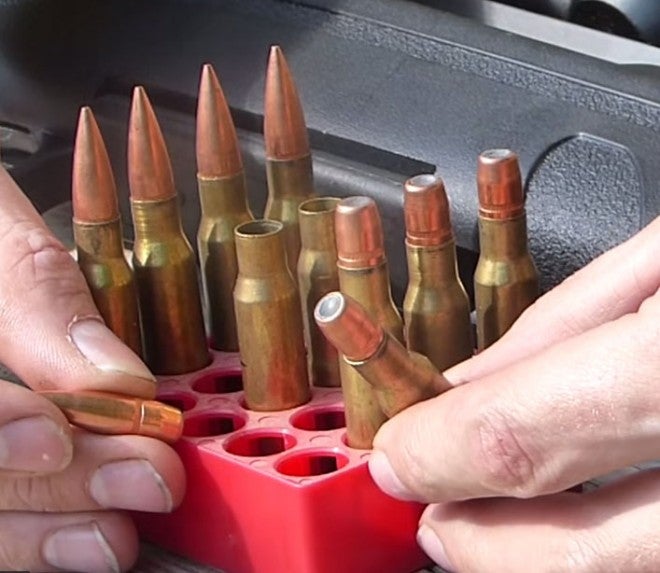Backwards Bullets – Testing Upside-Down Rifle Bullets
Russ Chastain 03.31.15

This is interesting enough. Apparently there’s a shooting myth that says it’s a good idea to load rifle bullets backwards–that is, with the bullet base upward and the point sticking down into the case. This seems, well, backwards to me, but this guy decided to test it. I decided to watch and see what happens.
The cartridge is 308 Winchester, and the bullets are 147 grain pointed FMJ boattails. These bullets have some exposed lead at the base, so a backwards presentation more-or-less creates a big, wide, jacketed soft point.
He fired each into a block of ballistic gelatin, at a steel plate, and through milk jugs.
The ballistic gelatin results show a predictable result: Explosive disintegration and reduced penetration. The steel plate test also indicated decreased penetration.
The milk jug test was the most dramatic-looking test, with the backwards bullet creating a much more explosive effect.
Finally, he compared the cases from the fired rounds and found that loading the bullets backwards caused split case necks and flattened primers, both of which indicate extreme pressure and are glaring red flags.
Seems like a really bad idea. Check out the test in its entirety below.